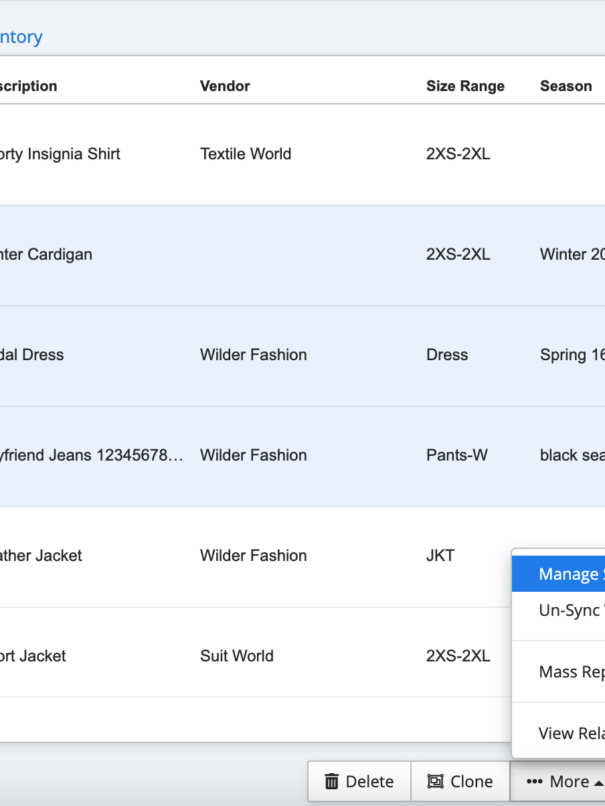Is there any way to know how much product you will need for the next quarter? Or, for the next holiday season? How much money you will need to invest in inventory for the upcoming fiscal year? The answers are in demand forecasting.
Demand forecasting is the process of creating models that assist in predicting future customer demand for particular products over a specific period of time using historical data and other analytical information. In addition to other things, it aids in the development of product road maps, inventory production, and inventory allocation. According to McKinsey, a 10% – 20% increase in supply chain forecasting accuracy can result in a 5% decrease in inventory costs and up to a 3% rise in revenues.
But how exactly do you forecast demand? In this post, we’re providing an answer to the question “What is demand forecasting?” and cover everything on demand forecasting, including all the different types and methods of demand forecasting, and how to choose the one that works best for your company.

Image by senivpetro on Freepik
What is Demand Forecasting
Demand forecasting is a methodical way to estimate how much of a certain product will be in demand in the future. Simply put, it enables you to accurately predict sales over the following weeks, months, or even years so that you always know how much inventory to order and keep on hand.
There are numerous ways to accomplish this, from manual calculations to automated inventory forecasting software but in general, inventory forecasting is a combination of market knowledge and data from previous sales.
Demand Forecasting Types
Demand forecasting can be conducted in numerous ways and your forecast can change depending on the forecasting model you use. The best approach is to do multiple demand forecasts in order to get a more complete picture of your potential sales. Below are the different types of demand forecasting.
1. Active demand forecasting
This type of demand forecasting is the best option if your company is new or growing. An active demand forecasting model takes into account your expansion strategies, market research, and advertising initiatives. It also factors in external variables, such as the state of the economy, growth predictions for your industry, and anticipated cost reductions resulting from increased supply chain effectiveness.
2. Passive demand forecasting
Passive demand forecasting uses historical sales data to forecast future demand. It’s a strategy that counts on sales this year being roughly equal to those from the previous one. Because it doesn’t call for the application of statistical techniques or the analysis of economic trends, this type of demand forecasting is simpler than other types of demand forecasting. This is a good strategy for companies that prioritize stability above growth.
3. Internal forecasting
This type of demand forecasting examines your operations to identify any potential barriers that could impede your growth or point out the untapped potential within the company. Internal business demand forecasting takes the funding of your company, the amount of cash on hand, profit margins, supply chain activities, and employees into account.
4. External forecasting
External demand forecasting takes into account broader economic trends and considers how such trends may impact your company’s objectives. In addition, this type of forecasting can give you guidelines for how to achieve those objectives. It may also include other elements that might directly impact your supply chain, such as the availability of raw materials.
5. Long-term forecasts
The goal of this demand forecasting model is to influence the trajectory of your company’s growth by making predictions one to four years in the future, partially based on sales data and market analysis. You can organize your supply chain operations, capital investments, and marketing plan using this forecasting method in order to get ready for potential demand.
6. Short-term forecasts
Short-term projections only consider the next three to twelve months. Looking at short-term demand enables you to update your estimates based on current sales data and swiftly respond to changes in customer demand. Understanding short-term demand is a good option if you manage a product range that often changes but for most companies it is simply one element of a bigger picture.
Methods of Demand Forecasting
There are several methods of demand forecasting, and they can be divided into two broad groups: quantitative and qualitative.
Quantitative demand forecasting methods
Quantitative demand forecasting is based on previous information about customer demand, seasonal demand, supply chain efficiency, and other parameters that are driven by data. Several of the most popular quantitative forecasting methods include:
- Trend projection. The trend projection method employs historical data in order to construct a sales forecast. Although this can provide an accurate demand forecast for the immediate future, relying solely on sales history without taking other aspects into account may not be wise, especially if you need to develop a long-term demand strategy for your supply chain.
- Barometric forecasting. This demand forecasting method projects future demand using present data. It uses statistical analysis to forecast demand.
- Econometric forecasting. This model combines data on demand with knowledge of outside factors that can affect the demand in order to produce a demand plan. Compared to other methods, econometric forecasting involves more complex statistical forecasting methodologies, but it also has the potential to produce more precise demand forecasts.
- Exponential smoothing. This demand forecasting method incorporates seasonal differences in sales into the result while also using past data as input. Because demand planning using exponential smoothing may be based on a limited dataset, it can be a helpful quantitative tool for startups and new businesses.
Qualitative demand forecasting methods
Methods for qualitative forecasting are less reliant on data and include more human input. A qualitative forecasting system makes use of both the internal and external information bases of your business. Below are some of the most popular methods for qualitative demand forecasting:
- Sales force composite. This method of demand forecasting brings together the members of the sales team, supply chain management, and other parties involved in forecasting demand. The sales staff relies on their experience and takes the lead on sales forecasting.
- The Delphi Method. Sometimes referred to as the expert method, the Delphi approach involves a demand planner who gathers a group of subject matter experts and requests their input on a series of questions regarding potential demand. The planner then compiles a summary based on the responses, which is presented to the panel. The experts rephrase the questions in light of the summary from the first round of responses. This process is repeated by the demand planner until the expert panel reaches a consensus.
- Market research. This forecasting method generates a demand prediction using information on market trends and opportunities. Plans for promotion and expansion as well as details on the capacity and constraints of the supply chain should be taken into account when forecasting the market. Startups that lack the historical data necessary for sales forecasting can benefit from it.
Both quantitative and qualitative methods have their own benefits and drawbacks. For an astute demand forecaster, a combination of both might be the ideal option.
How to Calculate How Much Inventory You Need
If you don’t have inventory management software, there are three basic calculations that can help you estimate how much stock you need to keep in your warehouse and when to reorder.
The first calculation you can use is the inventory turnover ratio, which reveals how rapidly you run out of stock. To arrive at this estimate, your sales (COGS or cost of goods sold) are divided by the average inventory to arrive at this estimate. A low inventory turnover ratio might be an indicator that you have surplus inventory.
Another option is to use the days sales of inventory calculation (DSI), which shows how many days it will take for your inventory to sell. To get your days sales of inventory, divide inventory by cost of sales, then multiply by 365.
Finally, you can estimate your safety stock, i.e. how much inventory you should have in case there is a run on a certain item (for instance, ice cream during the summer months). Take the average of your top three sales days for the previous month, quarter, or year, then remove the average daily sales volume for the same period to arrive at this figure.

Image by aleksandarlittlewolf on Freepik
Benefits of Quality Demand Forecasting
Regardless of whether your business is large or small, demand forecasting is an absolute must. Here are just a few of the benefits of demand forecasting.
- Plan your supply chain. You can prepare ahead of time by using demand forecasting to keep inventory on hand for peak demand. With less time to fill orders, you won’t have to pay rush fees or put products on backorder.
- Recognize the influences external factors have on your sales. Forecasts might include information on economic factors, market sector estimates, and statistics on industry trends. Including these variables in your forecasting model can contribute to your ability to adjust and grow your company.
- Identify seasonal trends. Examining previous sales data will enable you to identify seasonal patterns and fluctuations. Knowing which months have lower customer demand is vital. For example, if your sales decline every June, that can be a good time to run promotions to keep your customers interested.
- Make smarter money decisions. Your previous financial statements will show you how sales revenue and the costs of products sold interact. This might help you determine when you will have enough money to buy new inventory.
The Bottom Line
Demand forecasting is a crucial component of running and expanding your company. Simply put, you need to have some idea of how much you will sell and therefore, how much inventory you‘ll need to cover those sales.
Determining this can be a challenge. In order to be successful, demand forecasting should incorporate various elements, including reliable data, useful feedback from the sales team, outside specialists, market research, strong supply chain analytics, etc.
Ultimately, it’s up to you to choose whether to use an automatic solution or one of the several manual methods for demand forecasting. By employing efficient inventory management software like ApparelMagic, you can get extensive analytics and distribution metrics to make the process much simpler.







